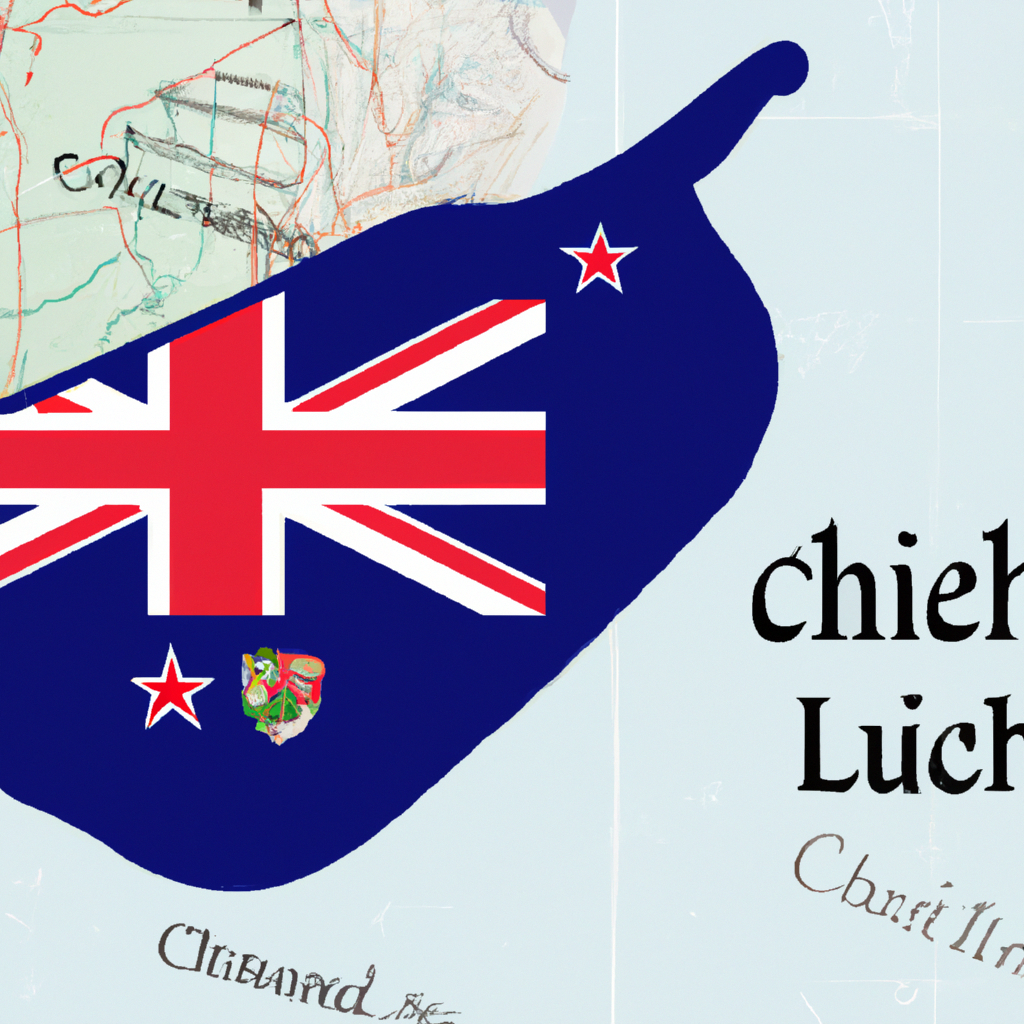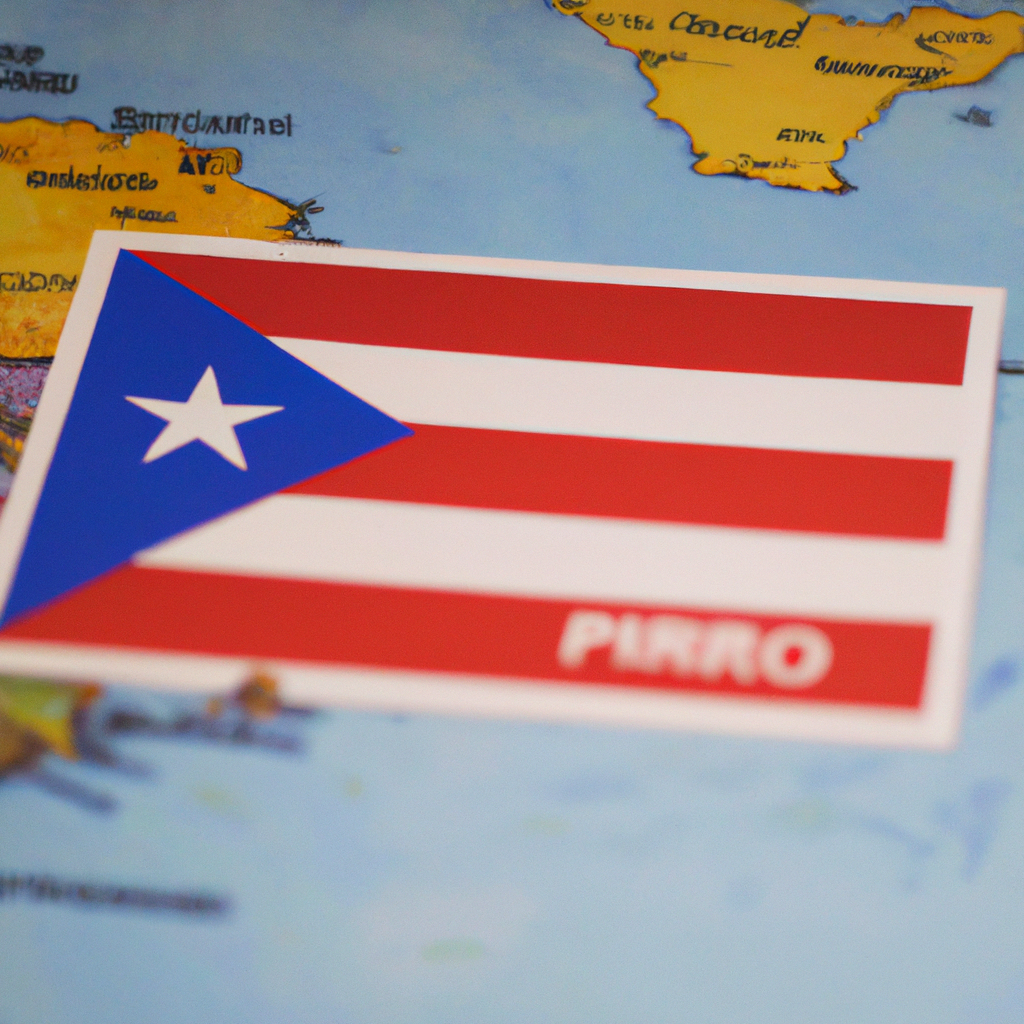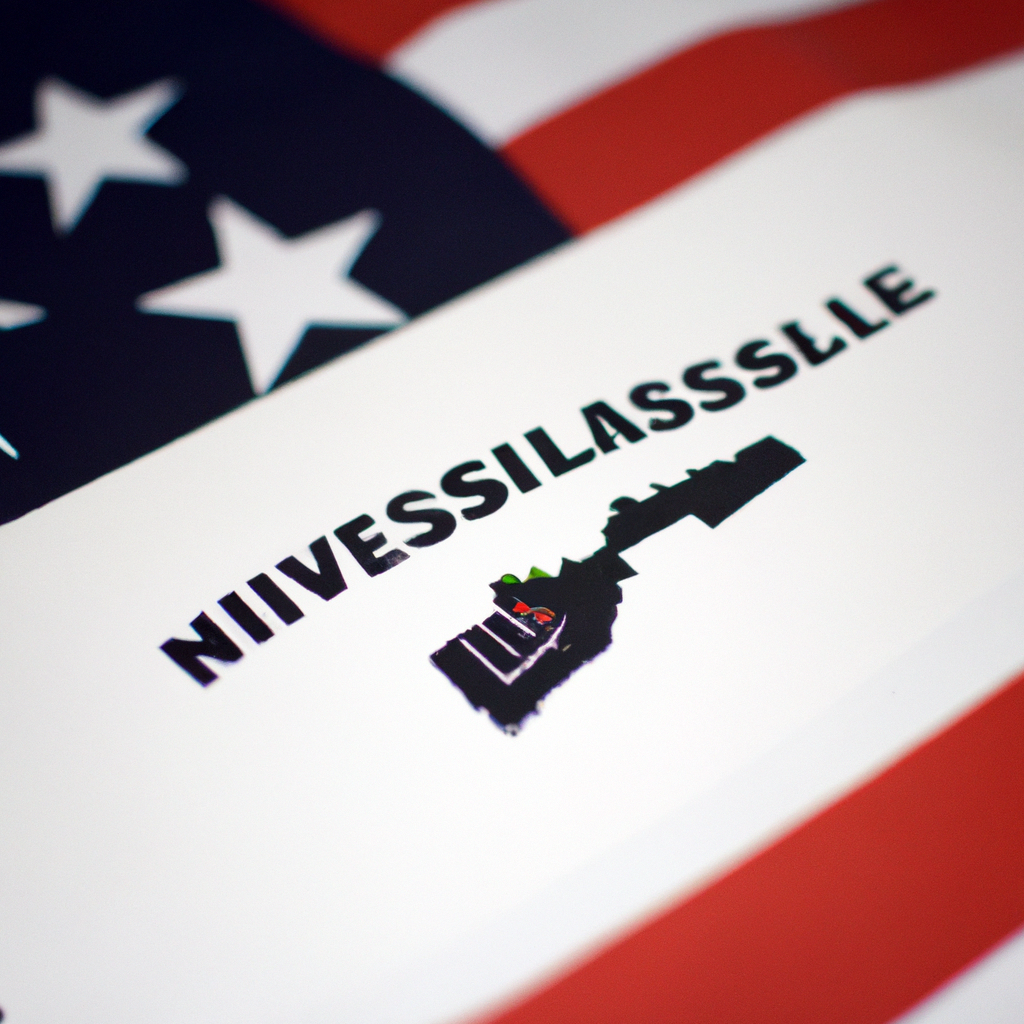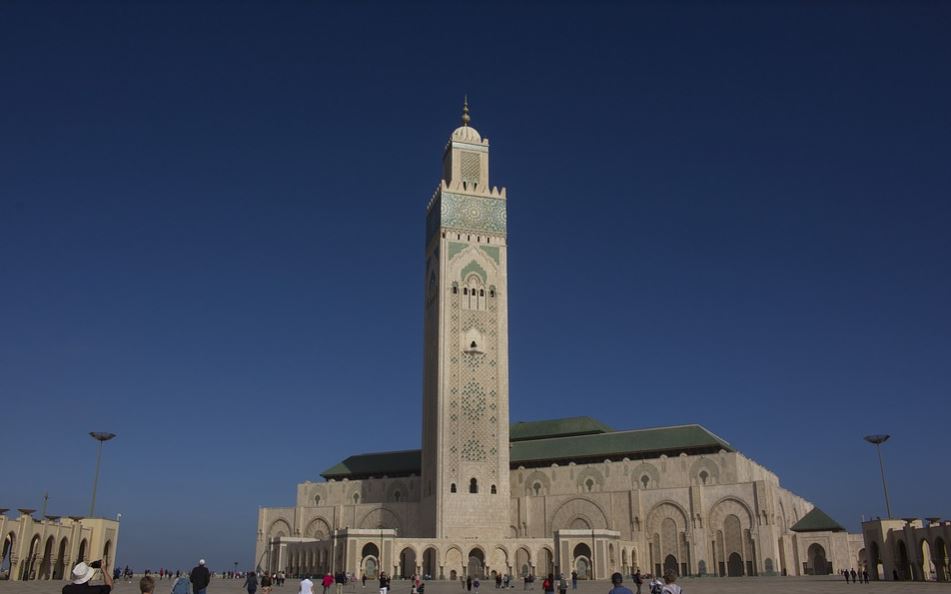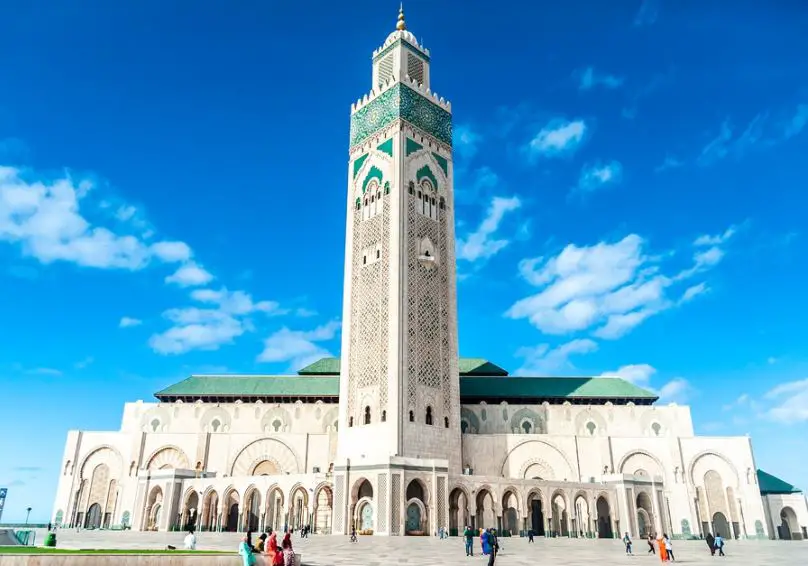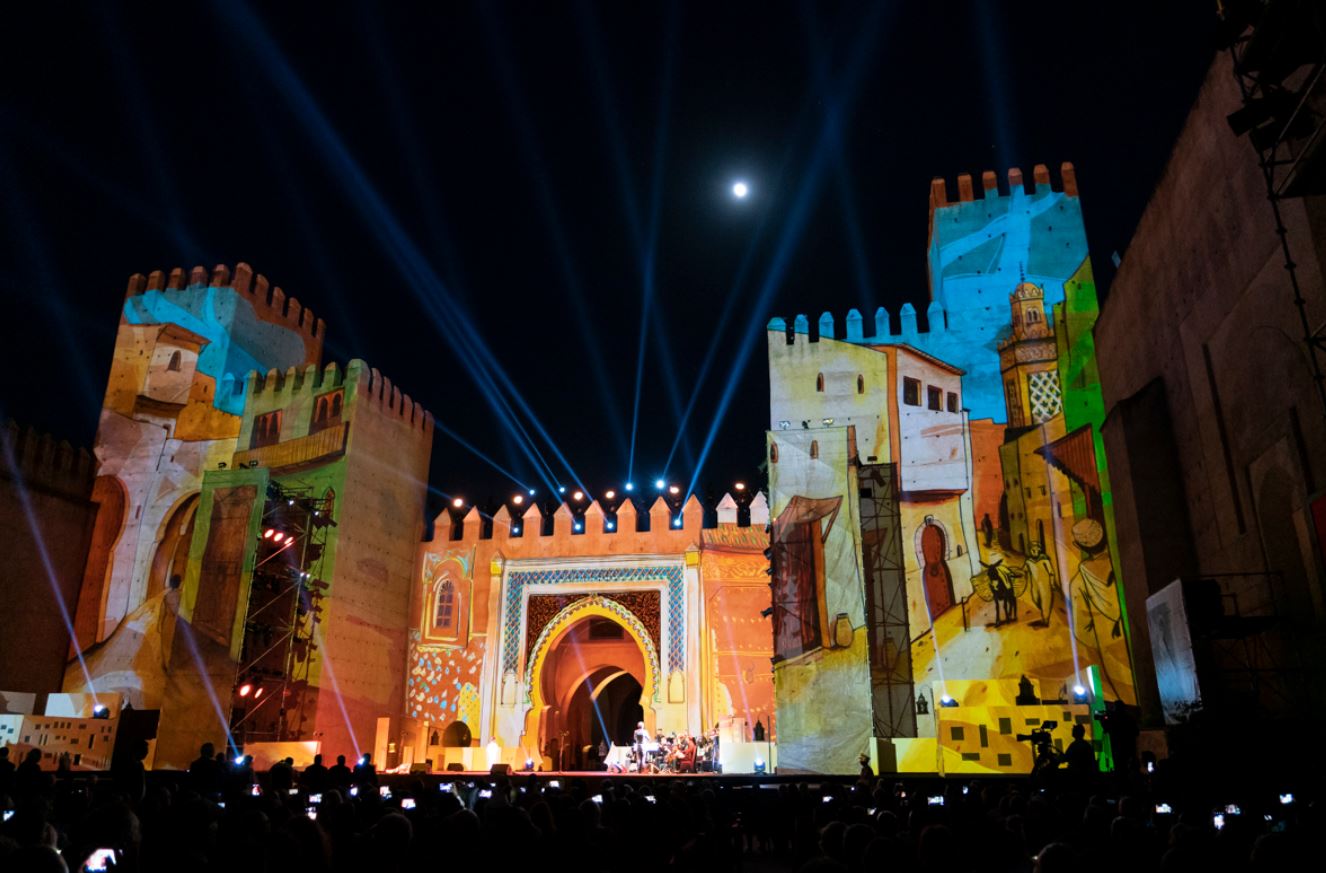Marrakech, Morocco: Interesting Facts,History, Things to do,Why to Visit
Post ByAdequate Travel
Welcome to a world of captivating beauty, exhilarating experiences and ancient culture. Marrakech, Morocco, is the place to allow your enigmas of the world to come alive. It is believed to be one of the greatest cities in the region and offers a plethora of activities, facts and things to do. From the infamous Bahia Palace and bustling Jemaa el-Fnaa, to rushing river channels weaving through the city, there’s never a shortage of things to see and do. Get to know its incredible history, experience the energy of an ancient Islamic city, savor the flavors of the street food and wander through winding, narrow alleys to discover hidden gems. Marrakech — a must-visit destination for any traveler.
Morocco is a country located in North Africa. It is known for its diverse culture, rich history, and vibrant cities. The capital city is Rabat, but the largest city is Casablanca.Morocco is bordered by the Atlantic Ocean and the Mediterranean Sea, making it a popular tourist destination for its beautiful beaches. It also has a diverse landscape, with the Atlas Mountains running through the country and the Sahara Desert in the south.The country has a constitutional monarchy, with King Mohammed VI as the current monarch. Morocco has made significant economic and political reforms in recent years, and it is considered one of the more stable countries in the region.Tourism plays a major role in Morocco's economy, with attractions such as the bustling markets of Marrakech, the beautiful blue city of Chefchaouen, and the ancient Roman ruins of Volubilis drawing visitors from around the world. The country is also famous for its cuisine, which includes dishes like couscous, tagine, and mint tea.Morocco is known for its rich and diverse culture, influenced by Arab, Berber, and French traditions. It is home to several UNESCO World Heritage sites, including the historic cities of Fez and Meknes. Traditional arts and crafts, such as pottery, carpet weaving, and metalwork, are also important parts of Moroccan culture.Despite its many attractions, Morocco faces challenges such as high unemployment rates, poverty, and a significant wealth gap. However, the government has implemented various initiatives to address these issues and promote sustainable development.Overall, Morocco offers a unique blend of history, culture, and natural beauty, making it an enticing destination for travelers.Uncover the best morocco attractions that will leave you awe-inspired and wanting more.
Interesting facts
1. Geographic Diversity:
Morocco is known for its diverse geography, which includes stunning coastlines, mountains, and deserts. The country is located in North Africa, with the Atlantic Ocean to the west and the Mediterranean Sea to the north. The Atlas Mountains stretch across the country, offering breathtaking landscapes and outdoor activities such as hiking and skiing.
Example: The coastal city of Essaouira is renowned for its beautiful beaches and is a popular destination for water sports enthusiasts.
2. Rich Cultural Heritage:
Morocco boasts a rich and vibrant cultural heritage influenced by Arab, Berber, and European civilizations. The country is home to numerous ancient cities, such as Fez, Marrakech, and Casablanca, where traditional architecture, bustling markets, and historical landmarks can be found. Moroccan craftsmanship, including intricate ceramics, mosaic tilework, and handmade textiles, is renowned globally.
Example: The medina of Marrakech, a UNESCO World Heritage Site, showcases Morocco's cultural heritage with its narrow alleys, vibrant souks, and stunning architectural gems like the Bahia Palace.
3. Traditional Cuisine:
Moroccan cuisine is a delight for food enthusiasts. It combines flavors from various influences, resulting in a unique and diverse culinary experience. Signature dishes include tagine (slow-cooked stews), couscous, pastilla (a savory pastry), and mint tea. Moroccan cuisine is known for its rich spices, such as cumin, turmeric, cinnamon, and saffron.
Example: A visit to the Jemaa el-Fnaa square in Marrakech offers an introduction to the vibrant street food culture of Morocco, where you can savor traditional dishes like grilled meats, snail soup, and freshly squeezed orange juice.
4. Traditional Music and Dance:
Music and dance are deeply ingrained in Moroccan culture and play a significant role in celebrations and religious events. Traditional music genres like Gnawa, Andalusian, and Berber resonate with unique melodies and rhythmic patterns. Moroccan dance forms, such as the energetic and colorful Raqs Sharqi (belly dance) and the lively Ahidous of the Atlas Mountains, showcase the diversity of Moroccan traditional arts.
Example: The Fes Festival of World Sacred Music is a celebrated event that brings together musicians and performers from around the world to showcase their talents against the backdrop of the historical city of Fez.
5. Sahara Desert Adventures:
Morocco offers the opportunity to explore the vast Sahara Desert, which covers a significant portion of the country. Travelers can experience camel trekking across the golden dunes, spend a night in a traditional Bedouin camp, and witness stunning sunrises and sunsets in the desert. It is a unique and memorable adventure that allows visitors to connect with nature and immerse themselves in the magic of the Sahara.
Example: The Erg Chebbi dunes near the town of Merzouga are a popular destination for desert enthusiasts, offering the chance to experience the awe-inspiring beauty of the Sahara.
From museums to parks,morocco tourist attractions offer something for everyone, making it a versatile destination for all type of tourists.History of Morocco
The history of Morocco can be traced back to ancient times, with evidence of human habitation in the region dating back thousands of years. Here are some key points that highlight the significant periods and events in Morocco's history:
Ancient History
- Prehistoric artifacts such as stone tools and cave paintings indicate that humans have occupied the Moroccan region since the Paleolithic era.
- The Phoenicians established trading posts along the coast in the 1st millennium BCE, followed by the Carthaginians who colonized parts of the region.
- The Romans conquered the area during the 1st century BCE, making it a part of the Roman Empire. They established cities and infrastructure, which can still be seen today in places like Volubilis.
Islamic Rule
- In the 7th century CE, Arab Muslims brought Islam to Morocco, introducing a new religious and cultural influence that is still prevalent in the country today.
- The Almoravid dynasty, founded in the 11th century, played a major role in expanding Morocco's influence across North Africa and into Spain.
- The Almohad dynasty succeeded the Almoravids in the 12th century and continued to strengthen Morocco's position as a regional power.
Colonial Era
- In the late 19th century, European powers, particularly France and Spain, sought to establish colonies in Morocco. This led to various conflicts and diplomatic negotiations.
- In 1912, Morocco officially became a French protectorate, with parts of the country also falling under Spanish control.
- The struggle for independence intensified in the 20th century, with nationalist movements emerging and advocating for self-rule.
Modern Morocco
- Morocco gained independence from France and Spain in 1956, marking the beginning of a new era for the country.
- King Mohammed V played a crucial role in the independence movement and later became the country's first king.
- Morocco has experienced political and economic reforms in recent decades, aiming to modernize the country and improve living standards.
- The country has also positioned itself as a major tourist destination, attracting visitors with its rich history, diverse culture, and stunning landscapes.
Overall, Morocco's history is a tale of ancient civilizations, Islamic influence, colonial struggles, and the quest for independence. Each period has left its mark on the country, shaping its culture, architecture, and identity. Morocco's history continues to evolve, with the country embracing both its past and future as it navigates the complexities of the modern world.Exploring the rich heritage of historical sites in morocco is a journey through time and culture.Famous things of Morocco
Foods and Drinks
- Tagine: A traditional Moroccan dish cooked in a clay pot that consists of slow-cooked meat, vegetables, and aromatic spices.
- Couscous: A staple food of Morocco, made from steamed semolina grains served with meat or vegetables.
- Mint Tea: In Morocco, mint tea is a popular drink and an important part of the culture. It is made with fresh mint leaves, green tea, and sugar.
Architecture and Cities
- Marrakech: Known as the "Red City," Marrakech is famous for its vibrant markets, stunning palaces like the Bahia Palace, and the iconic Jamaâ El Fna Square.
- Casablanca: The largest city in Morocco, known for its modern architecture, including the impressive Hassan II Mosque.
- Chefchaouen: Often referred to as the "Blue City," Chefchaouen is famous for its picturesque blue-painted buildings and narrow streets.
Nature and Landmarks
- Sahara Desert: Morocco is home to a portion of the vast Sahara Desert, where tourists can experience camel trekking, sandboarding, and spending a night in traditional nomadic camps.
- Atlas Mountains: This mountain range cuts across Morocco, offering breathtaking landscapes and opportunities for hiking, skiing, and visiting Berber villages.
- Essaouira: A coastal town known for its beautiful sandy beaches, charming medina, and being a popular destination for windsurfing and kiteboarding.
Crafts and Textiles
- Moroccan Carpets: Handwoven rugs and carpets featuring traditional designs are famous export items from Morocco.
- Pottery and Ceramics: Morocco is renowned for its exquisite pottery and ceramics, often characterized by intricate patterns and vibrant colors.
- Leather Goods: The city of Fez is recognized for its leather tanneries, which produce high-quality leather products like bags, shoes, and jackets.
Discover some unique facts about morocco that will leave you amaze and intrigue.Culture of Morocco
Moroccan culture is a blend of Arab, Berber, and French influences, resulting in a unique and diverse heritage. Here are some key aspects of Moroccan culture:1. Language and Religion
The official language of Morocco is Arabic, while the Berber language is widely spoken in certain regions. French is also commonly spoken, particularly in urban areas and among the educated population. The majority of Moroccans practice Islam, with Sunni Muslims being the largest religious group in the country.2. Art and Architecture
Moroccan art and architecture are renowned for their intricate designs and vibrant colors. Traditional Moroccan art includes ceramics, mosaics, woodwork, and leatherwork. The architecture of Morocco is characterized by intricate geometric patterns, ornate tilework, and beautiful courtyards. An excellent example of Moroccan architecture is the famous Hassan II Mosque in Casablanca.3. Cuisine
Moroccan cuisine is a flavorful combination of spices, herbs, and diverse ingredients. Traditional dishes often include couscous, tagines (slow-cooked stews), pastilla (a savory pie), and harira (a hearty soup). Moroccan cuisine is known for its blend of sweet and savory flavors, with dishes often featuring ingredients like dates, apricots, almonds, and spices such as cumin, cinnamon, and saffron.4. Music and Dance
Music and dance are important forms of expression in Moroccan culture. The traditional music of Morocco includes styles such as chaabi, gnawa, and Andalusian music. Instruments like the oud, flute, and drums are commonly used. Moroccan dance forms, such as the famous belly dance, are lively and often performed during social and festive occasions.5. Clothing and Fashion
Traditional Moroccan clothing varies across different regions but often includes djellabas (long, loose robes) for both men and women. Women may also wear a headscarf called a hijab or a decorative headdress known as a tarboush. In urban areas, modern Western fashion trends have influenced the clothing choices of many Moroccans, especially among the younger generation.Overall, Morocco's culture embraces a rich tapestry of traditions, arts, languages, and religious practices. It is a melting pot of diverse influences, resulting in a unique cultural identity that is both deeply rooted in its historical heritage and open to modern innovations.Immerse yourself in the local culture by exploring morocco's top-rated tourist attractions.Cuisine of Morocco
Moroccan cuisine is known for its rich flavors, spices, and influences from various cultures, making it one of the most diverse and delicious cuisines in the world. Here are some key elements and examples of Moroccan cuisine:Spices and Flavors
Moroccan dishes are packed with an aromatic blend of spices such as cumin, coriander, turmeric, cinnamon, and paprika. These spices add depth and complexity to the dishes, creating a unique flavor profile. Some popular Moroccan dishes that showcase these flavors include:- Tagine: A slow-cooked stew made with meat, vegetables, and a variety of spices.
- Ras el Hanout: A spice blend consisting of various spices like cardamom, ginger, pepper, and nutmeg, used in many traditional Moroccan dishes.
- Harissa: A spicy chili paste made from roasted red peppers, garlic, and a mix of spices, often used as a condiment.
Influences from Various Cultures
Moroccan cuisine has been influenced by different cultures throughout its history, including Arab, Berber, Mediterranean, and Andalusian. These influences have shaped the ingredients and cooking techniques used in Moroccan dishes. Some examples of dishes that reflect these influences include:- Couscous: A staple dish made from semolina and steamed with vegetables, meat, or fish, commonly served on Fridays, the traditional day of couscous in Morocco.
- Briouat: A popular Moroccan pastry filled with sweet or savory ingredients, influenced by the Chinese egg roll and the Spanish empanada.
- Pastilla: A sweet and savory pie with layers of thin, flaky pastry filled with pigeon or chicken, nuts, spices, and topped with powdered sugar and cinnamon, influenced by Andalusian cuisine.
Rich Variety of Ingredients
Morocco's diverse landscape and climate contribute to a rich variety of ingredients used in its cuisine. From the coast to the mountains, you can find an abundance of fresh seafood, olives, lemons, aromatic herbs, and fruits. Some noteworthy ingredients in Moroccan cuisine include:- Preserved lemons: Lemons pickled in salt and their own juices, commonly used in tagines and stews to add a tangy flavor.
- Olives: Morocco is known for its wide variety of olives, which are used in salads, tagines, and as a snack.
- Saffron: A precious spice obtained from the saffron crocus flower, used to add a vibrant golden color and a delicate flavor to dishes such as rice and tagines.
1. Exploring the Souks of Marrakech
The Souks of Marrakech are a vibrant and bustling marketplace where you can find a wide range of goods and experience the local culture. You can wander through the narrow alleys and shop for traditional crafts, spices, textiles, and more. Make sure to bargain for the best prices and immerse yourself in the vibrant atmosphere.
2. Visiting the Atlas Mountains
The Atlas Mountains offer breathtaking landscapes and are perfect for outdoor activities such as hiking, trekking, and mountain biking. You can embark on a guided tour or hire a local guide to explore the stunning valleys, visit Berber villages, and witness the beauty of nature. Don't forget to take your camera to capture the scenic views along the way.
3. Discovering the Blue City of Chefchaouen
Chefchaouen is a picturesque town known for its blue-painted streets, buildings, and alleyways. Roaming around the narrow blue alleys is like entering a surreal world. You can explore the local markets, enjoy delicious Moroccan cuisine, and take stunning photos of the unique blue architecture.
4. Camel Trekking in the Sahara Desert
A visit to Morocco is incomplete without experiencing the Sahara Desert. Embark on a camel trekking adventure to explore the vast dunes, mesmerizing sunset, and star-filled night sky. You can spend the night in a desert camp, enjoy traditional music, and indulge in a delicious dinner under the stars.
5. Exploring the Roman Ruins of Volubilis
Volubilis is an ancient Roman city and a UNESCO World Heritage site. You can wander through the ruins, marvel at the well-preserved mosaics, and learn about the history of the region. Hiring a local guide will enhance your experience and provide valuable insights into the Roman civilization in Morocco.
Examples:1. Exploring the Souks of Marrakech
The Souks of Marrakech are a vibrant and bustling marketplace where you can find a wide range of goods and experience the local culture. You can wander through the narrow alleys and shop for traditional crafts, spices, textiles, and more. Make sure to bargain for the best prices and immerse yourself in the vibrant atmosphere.
2. Visiting the Atlas Mountains
The Atlas Mountains offer breathtaking landscapes and are perfect for outdoor activities such as hiking, trekking, and mountain biking. You can embark on a guided tour or hire a local guide to explore the stunning valleys, visit Berber villages, and witness the beauty of nature. Don't forget to take your camera to capture the scenic views along the way.
3. Discovering the Blue City of Chefchaouen
Chefchaouen is a picturesque town known for its blue-painted streets, buildings, and alleyways. Roaming around the narrow blue alleys is like entering a surreal world. You can explore the local markets, enjoy delicious Moroccan cuisine, and take stunning photos of the unique blue architecture.
4. Camel Trekking in the Sahara Desert
A visit to Morocco is incomplete without experiencing the Sahara Desert. Embark on a camel trekking adventure to explore the vast dunes, mesmerizing sunset, and star-filled night sky. You can spend the night in a desert camp, enjoy traditional music, and indulge in a delicious dinner under the stars.
5. Exploring the Roman Ruins of Volubilis
Volubilis is an ancient Roman city and a UNESCO World Heritage site. You can wander through the ruins, marvel at the well-preserved mosaics, and learn about the history of the region. Hiring a local guide will enhance your experience and provide valuable insights into the Roman civilization in Morocco.
When planning your trip to morocco, be sure to include the best things to do in morocco, which encompass a wide range of cultural experiences.Climate of Morocco
The climate of Morocco can be characterized as Mediterranean, with influences from the Atlantic Ocean and the Sahara Desert. The country experiences a wide range of climatic conditions due to its diverse geography, which includes coastal areas, high mountains, and desert regions.
1. Coastal Areas:
Along the Atlantic coastline, the climate is generally mild and influenced by oceanic breezes. The summers are warm and humid, with temperatures averaging between 25°C and 30°C (77°F and 86°F). Winters are mild and can be relatively rainy, with temperatures ranging from 15°C to 20°C (59°F to 68°F).
2. High Mountains:
The Atlas Mountains in Morocco have a mountain climate, with colder temperatures and higher annual precipitation compared to other regions of the country. The winters can be quite cold, with snowfall occurring in the higher elevations. In contrast, summers tend to be cooler due to the higher altitudes.
3. Sahara Desert:
The southeastern part of Morocco is covered by the Sahara Desert, which experiences an arid desert climate. Days are extremely hot, with temperatures often exceeding 40°C (104°F) during the summer months. Nights can be significantly cooler, with temperatures dropping below 20°C (68°F). Annual rainfall is minimal, and there are frequent sandstorms in this region.
4. Inland Areas:
Inland regions, away from the coastal influence and higher altitudes, experience a semi-arid climate. Summers are hot and dry, with temperatures reaching above 35°C (95°F) in some areas. Winters are cooler, but still relatively mild, with temperatures averaging between 10°C and 20°C (50°F and 68°F).
5. Regional Variations:
It's important to note that Morocco's climate can vary within different regions and throughout the year. For instance, the coastal city of Essaouira has a milder climate due to its proximity to the ocean, while Marrakech, located inland, experiences hotter temperatures in the summer. The High Atlas Mountains also create microclimates, with cooler temperatures at higher elevations.
Overall, Morocco offers a diverse climate with distinct regional variations. Whether you prefer beachside relaxation, mountain adventures, or desert exploration, there is a climate to suit every traveler's preferences.Exploring the city's diverse neighborhoods is one of the best ways to discover the best morocco attractions, each with its own character and charm.Popular activities in Morocco
1. Exploring the Medina of Marrakech:
The Medina of Marrakech is a UNESCO World Heritage site and one of the most popular tourist attractions in Morocco. Visitors can wander through its narrow streets, vibrant souks (markets), and historic sites such as the Bahia Palace and Koutoubia Mosque.
2. Camel trekking in the Sahara Desert:
A highlight of any trip to Morocco is camel trekking in the Sahara Desert. Travelers can take guided tours or overnight camping trips to experience the vastness and beauty of the desert. Riding camels across the sand dunes and camping under the stars are unforgettable experiences.
3. Visiting the Atlas Mountains:
The Atlas Mountains offer breathtaking landscapes and opportunities for outdoor activities. Visitors can go hiking, trekking, or skiing in the winter months. The stunning views, traditional Berber villages, and waterfalls make the Atlas Mountains a must-visit destination.
4. Exploring the blue city of Chefchaouen:
Chefchaouen, also known as the Blue City, is famous for its picturesque blue-painted streets and buildings. Visitors can wander through its narrow alleys, shop for local handicrafts, or simply soak in the charming blue ambiance the city provides.
5. Discovering the ancient Roman ruins of Volubilis:
Volubilis is an archaeological site that showcases the ancient Roman civilization in Morocco. Visitors can explore well-preserved mosaics, Roman baths, and the remains of grand villas. It is a fascinating destination for history enthusiasts.
6. Enjoying water activities in Essaouira:
Essaouira is a coastal city known for its sandy beaches and strong winds, making it a popular destination for water sports enthusiasts. Visitors can indulge in windsurfing, kitesurfing, and fishing, or simply relax on the beach and enjoy fresh seafood.
7. Experiencing the vibrant nightlife of Casablanca:
Casablanca, Morocco's largest city, offers a lively nightlife scene. Visitors can explore trendy bars, nightclubs, and live music venues. The city's cosmopolitan atmosphere and energetic nightlife make it a great place to enjoy a night out.
Plan your trip with a list of the best things to do in morocco, catering to all interests.Nightlife in Morocco
Morocco offers a diverse and vibrant nightlife scene, particularly in its major cities. Here are some key points about the nightlife in Morocco:
1. Marrakech: A Party in the Red City
Marrakech is known for its lively nightlife, with a wide range of bars, nightclubs, and traditional Moroccan entertainment venues. Popular destinations include Pacha Marrakech, a famous nightclub featuring international DJs, and Theatro, a popular multipurpose venue offering live music performances and theatrical shows.
2. Casablanca: A Modern Metropolis
As Morocco's largest city and economic hub, Casablanca boasts a vibrant and modern nightlife. The city is home to numerous trendy nightclubs and bars, often featuring local and international DJs. The Corniche area is particularly popular, with beachfront clubs that offer stunning views of the Atlantic Ocean.
3. Tangier: A Blend of Cultures
Tangier's nightlife has a unique blend of Moroccan, French, and Spanish influences due to its historical significance as an international city. Visitors can enjoy a mix of traditional Moroccan music, jazz concerts, and lively bars. The popular Hafa Café is a must-visit, known for its bohemian atmosphere and stunning views of the Strait of Gibraltar.
4. Fes: A Traditional Experience
Fes, Morocco's cultural and spiritual capital, may not have a vibrant clubbing scene, but it offers a more traditional and authentic nightlife experience. The city comes alive with street performances, live music, and storytelling in the medina's bustling squares. Visitors can also enjoy traditional Moroccan cuisine and tea in local cafés.
5. Agadir: Beachside Fun
Agadir, a popular coastal resort town, offers a lively nightlife scene with a focus on beach clubs, lounges, and waterfront bars. Visitors can relax and enjoy music, cocktails, and shisha on the beach while taking in the beautiful views of the Atlantic Ocean. Clubs and discos are also available for those looking to dance the night away.
Overall, Morocco's nightlife scene caters to a variety of tastes and preferences, ranging from traditional Moroccan entertainment to modern clubs and bars. Whether you prefer a vibrant city atmosphere or a relaxed beachside setting, Morocco has a diverse range of options to ensure a memorable evening experience.Discover the untold stories behind morocco unique facts, and historical treasures.Reasons to Visit Morocco
1. Rich Cultural Heritage:
With its diverse history influenced by Berber, Arab, and European cultures, Morocco offers a unique cultural experience. Visitors can explore ancient cities such as Marrakech and Fes, with their labyrinthine streets, vibrant marketplaces, and stunning architecture, including the famous Jardin Majorelle and the Koutoubia Mosque.
2. Exquisite Cuisine:
Known for its aromatic spices and flavorful dishes, Moroccan cuisine is a must-try for food enthusiasts. Traditional dishes like tagine, couscous, and pastilla showcase a blend of sweet and savory flavors. Sampling street food in Marrakech's famous Djemaa el-Fna square or dining in a local riad can be delightful culinary experiences.
3. Diverse Natural Landscapes:
Morocco's geographical diversity offers a wide array of landscapes. From the Sahara Desert and its golden dunes to the stunning Atlas Mountains and the picturesque coastal towns of Essaouira and Chefchaouen, there are endless opportunities for outdoor adventures like trekking, camel riding, or simply enjoying breathtaking views.
4. Fascinating Ancient Ruins:
For history enthusiasts, Morocco is home to numerous ancient ruins and archaeological sites. Visit the Roman city of Volubilis to witness the well-preserved Roman mosaics and ruins, and explore the ancient Phoenician and Roman port city of Asilah with its impressive walls and historic medina.
5. Traditional Crafts and Souks:
Morocco is renowned for its traditional craftsmanship, particularly in cities like Marrakech and Fes. Explore the bustling souks filled with intricately designed rugs, pottery, leather goods, and exquisite textiles. Watching artisans create their crafts, like metalwork or carpet weaving, is an enriching experience.
In summary, visiting Morocco offers a rich cultural heritage, exquisite cuisine, diverse natural landscapes, fascinating ancient ruins, and the opportunity to explore traditional crafts and souks. Whether you are interested in history, adventure, or experiencing new cuisines, Morocco has something to offer for every type of traveler.Whether you're a history buff or an adventure seeker, morocco has an attraction for you. So, don't miss the chance to visit popular places in moroccoNumber of Days Required to Visit Morocco
When planning a trip to Morocco, the number of days required can vary depending on the specific places you want to visit and the activities you wish to engage in. However, to truly experience the diverse landscapes, culture, and history of this vibrant country, it is recommended to spend at least 7-10 days in Morocco.
Factors to Consider
1. Desired Destinations: Morocco offers a wide range of destinations such as Marrakech, Fes, Chefchaouen, Sahara Desert, Casablanca, and Essaouira, each with its own unique attractions. Consider the places you want to explore and allocate sufficient time for each.
2. Travel Interests: If you have specific interests like hiking in the Atlas Mountains, camel trekking in the Sahara, or exploring ancient medinas, you may need to plan additional days for such activities.
3. Travel Pace: Consider the time you wish to spend in each destination and whether you prefer a leisurely trip or a more fast-paced itinerary.
Sample Itinerary:
Here's an example of a 10-day itinerary to give you an idea of what can be covered:
Day 1-3: Marrakech
Explore the bustling medina, visit historical sites like the Bahia Palace and Koutoubia Mosque, and wander through the vibrant souks.
Day 4-5: Fes
Experience the medieval atmosphere of the Fes Medina, visit the famous tanneries, and explore the ancient educational institution of Al Quaraouiyine.
Day 6-7: Merzouga (Sahara Desert)
Embark on a desert adventure, ride camels over the sand dunes, spend a night in a traditional nomadic camp, and witness the magical sunrise or sunset over the desert.
Day 8-10: Essaouira
Relax in the coastal town of Essaouira, stroll along its picturesque beaches, and explore the charming medina with its Portuguese influences.
Remember, this is just a sample itinerary, and you can adjust it according to your preferences and the number of days you have available to spend in Morocco.
Exploring the city's diverse neighborhoods is one of the best ways to discover the best morocco attractions, each with its own character and charm.Significance of Morocco
Morocco is a country located in North Africa, situated on the coast of the Atlantic Ocean and the Mediterranean Sea. It holds a significant position both historically and geographically, making it a country of great importance in various aspects. Here are some key points highlighting the significance of Morocco:1. Geographical Location:
Morocco's strategic geographical location has given it a unique position in the African continent. It serves as a gateway between Europe and Africa, making it a crucial trading and transit hub. The country's proximity to the Strait of Gibraltar enables it to control maritime traffic between the Atlantic Ocean and the Mediterranean Sea, enhancing its geopolitical significance.2. Cultural Heritage:
Morocco boasts a rich cultural heritage that has evolved over centuries, combining influences from Arab, Berber, and European civilizations. The country offers a diverse blend of traditions, architecture, languages, music, and cuisine. Its cultural significance is seen in the UNESCO World Heritage Sites such as the ancient medina of Marrakech, the historic city of Fez, and the archaeological site of Volubilis.3. Tourism:
Morocco's diverse landscapes, including beautiful coastlines, mountain ranges, and desert regions, attract a large number of tourists every year. Cities like Marrakech and Casablanca offer unique cultural experiences, while the Atlas Mountains and the Sahara Desert hold immense natural beauty. The tourism sector plays a significant role in the country's economy, contributing to employment opportunities and foreign exchange earnings.4. Economic Significance:
Morocco has emerged as one of the leading economies in Africa, with a diverse range of industries such as agriculture, textiles, mining, and tourism. Its strategic location connects it to major trading partners, making it an important player in international trade. The country has also attracted foreign investment, contributing to its economic growth and development.5. Political Stability:
Morocco has maintained relative political stability compared to some other countries in the region. This stability has made it an attractive destination for foreign businesses and investors, ensuring a favorable environment for economic growth. Additionally, Morocco plays a crucial role in regional security initiatives and is a participant in international organizations such as the African Union and the Arab League.Examples:Geographical Location:
Morocco's coastline along the Atlantic Ocean and the Mediterranean Sea provides valuable access to maritime trade, benefiting both the country and its trading partners.
Cultural Heritage:
The medina of Marrakech, with its bustling souks and historic monuments like the Koutoubia Mosque, showcases Morocco's rich cultural heritage to visitors from around the world.
Tourism:
The Sahara Desert, with its breathtaking sand dunes and camel treks, attracts tourists seeking an unforgettable desert adventure experience in Morocco.
Economic Significance:
Morocco's textile industry, known for producing high-quality fabrics and garments, has become a major contributor to the country's export revenue and job creation.
Political Stability:
Morocco's political stability has made it an ideal host for international conferences and events, such as the United Nations Climate Change Conference (COP22) held in Marrakech in 2016.
From hidden gems to iconic landmarks, morocco has something for every traveler's taste.FAQ'S of Morocco
1. What is the currency of Morocco?
The currency of Morocco is the Moroccan Dirham (MAD). One Moroccan Dirham is divided into 100 centimes. It is advisable to exchange currency either at banks or authorized exchange offices to get the best rates.
Example:
- The exchange rate for 1 US dollar (USD) is approximately 9.83 Moroccan Dirham (MAD).
2. Is it safe to travel to Morocco?
Yes, Morocco is generally a safe country to visit. The government has made efforts to improve security and ensure the safety of tourists. However, it is always important to take precautions like anywhere else in the world. It is recommended to be cautious of pickpocketing in busy tourist areas and avoid isolated areas at night.
Example:
- Be aware of your surroundings and keep an eye on your belongings when visiting crowded markets or public transportation.
3. What is the best time to visit Morocco?
The best time to visit Morocco is during spring (April to June) and fall (September to November). The weather during these periods is generally pleasant with mild temperatures, making it ideal for exploring the country's attractions. Winter (December to February) can be cold, especially in the mountain regions, while summers (July to August) can be extremely hot in the desert areas.
Example:
- If you plan to visit the Sahara Desert, it is better to avoid the scorching heat of summer and opt for a visit in spring or fall.
4. Are there any cultural customs to be aware of in Morocco?
Yes, there are some cultural customs to be aware of in Morocco. These include dressing modestly, particularly in more conservative areas, respecting Islamic traditions, and asking for permission before taking photographs of locals, especially women. It is also customary to greet and express politeness in Morocco, so learning a few basic Arabic phrases can be helpful.
Example:
- When visiting a mosque, it is important to dress modestly, covering shoulders and knees.
5. What are the popular tourist attractions in Morocco?
Morocco offers a diverse range of tourist attractions. Some of the popular ones include:
- The vibrant city of Marrakech, with its famous Djemaa el-Fna square and historic Medina.
- The blue-painted town of Chefchaouen, known for its stunning architecture and picturesque streets.
- The ancient Roman ruins of Volubilis, a UNESCO World Heritage site.
- The Sahara Desert, where visitors can take camel rides and spend a night in a desert camp.
- The coastal city of Essaouira, famous for its beautiful beaches and vibrant art scene.
- The Atlas Mountains, offering breathtaking landscapes and opportunities for hiking and trekking.
Uncover the best morocco attractions that will leave you awe-inspired and wanting more.


